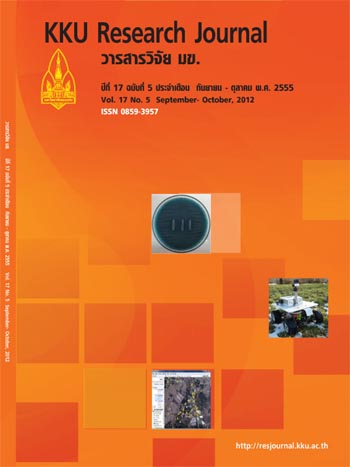Exobiopolymer application of three enthomopathogenic fungal strains as prebiotic used
Main Article Content
Abstract
Exopolysaccharides of three enthomopathogenic fungal strains namely; Aschersonia samoensis BCC 2466, Ophiocordyceps nipponica BCC 2092, and Gibellula pulchra BCC 2711, were studied for their prebiotic properties. These exopolysaccharides were previously characterized as glucan with molecular weight of 4.34, 3.39 and 4.06 kDa, respectively. The production of these exopolysaccharides was carried out using fermentation in submerged culture and their exobiopolymers were purified. These purified exopolysaccharides were then used as a sole carbon source on their prebiotic study by co-cultivation with probiotic bacteria. In vitro prebiotic study shows that all three exopolysaccharides well supported the growth of Lactobacillus acidophilus BCC 13839 and Bifidobacterium animalis ATCC 25527 after the cultivation of these two bacteria on each exobiopolymer compared with inulin (a commercial prebiotic) and glucose. The highest viability of L. acidophilus BCC 13839 was obtained on exobiopolymer of A. samoensis BCC 2466 even though its growth was lower when compared that on glucose and inulin. For B. animalis ATCC 25527, its cell growth and viability on all exobiopolymers were higher than those on glucose and inulin. These evidences showed well characteristics of the fungal exopolysaccharides on their growth-stimulating prebiotics.
Article Details
How to Cite
Prathumpai, W., Rachathewee, P., Khajeeram, S., Tanjak, P., & Methacanon, P. (2017). Exobiopolymer application of three enthomopathogenic fungal strains as prebiotic used. Asia-Pacific Journal of Science and Technology, 17(5), 743–753. retrieved from https://so01.tci-thaijo.org/index.php/APST/article/view/83283
Section
Research Articles


